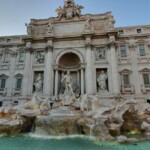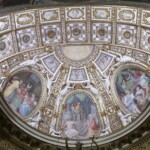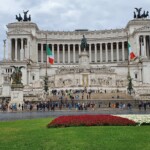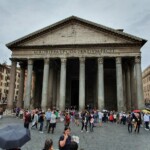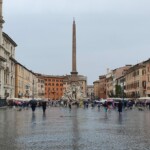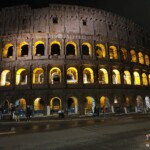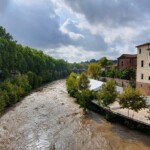Rome bursting with piazzas, statues and paintings, churches and museums. It’s hard to imagine that such creativity emanated from a place where cruelty was so celebrated, in one of the worlds most iconic structures, the Colosseum. On one hand, you have the artists and architects who made this city their home during the Renaissance and Baroque periods, contributing to Romes glorious wealth and on the other hand, emperors and popes who controlled the political and religious life. Today, however, Rome epitomises the good life offering the very best in culture, cuisine and fashion. No matter where your interests lie, you are bound to find something that interests you. The city is blessed with a Mediterranean climate that makes it a year-round destination.
Legend has it that Rome was founded in 753 BC by Romulus, after killing his twin brother Remus. The Roman Empire was founded in 625 BC and fell in AD 476. Over this time the Roman Empire conquered and integrated dozens of cultures.
The history of the Roman Empire can be divided into three distinct periods: The Period of Kings (625-510 BC), Republican Rome (510-31 BC), and Imperial Rome (31 BC-AD 476).
Period of Kings (625-510 BC)
The first period in Roman history is known as the Period of Kings, and it lasted from Rome’s founding until 510 BC. During this brief time Rome, led by no fewer than six kings, advanced both militaristically and economically with increases in physical boundaries, military might, and production and trade of goods including oil lamps. Politically, this period saw the early formation of the Roman constitution. The end of the Period of Kings came with the decline of Etruscan power, thus ushering in Rome’s Republican Period.
Republican Rome (510-31 BC)
Rome entered its Republican Period in 510 BC. No longer ruled by kings, the Romans established a new form of government whereby the upper classes ruled, namely the senators and the equestrians, or knights. However, a dictator could be nominated in times of crisis. In 451 BC, the Romans established the “Twelve Tables,” a standardized code of laws meant for public, private, and political matters.
Rome continued to expand through the Republican Period and gained control over the entire Italian peninsula by 338 BC. It was the Punic Wars from 264-146 BC, along with some conflicts with Greece, that allowed Rome to take control of Carthage and Corinth and thus become the dominant maritime power in the Mediterranean.
Soon after, Rome’s political atmosphere pushed the Republic into a period of chaos and civil war. This led to the election of a dictator, L. Cornelius Sulla, who served from 82-80 BC. Following Sulla’s resignation in 79 BC, the Republic returned to a state of unrest. While Rome continued to be governed as a Republic for another 50 years, the shift to Imperialism began to materialize in 60 BC when Julius Caesar rose to power.
By 51 BC, Julius Caesar had conquered Celtic Gaul and, for the first time, Rome’s borders had spread beyond the Mediterranean region. Although the Senate was still Rome’s governing body, its power was weakening. Julius Caesar was assassinated in 44 BC and replaced by his heir, Gaius Julius Caesar Octavianus (Octavian) who ruled alongside Mark Antony. In 31 BC Rome overtook Egypt which resulted in the death of Mark Antony and left Octavian as the unchallenged ruler of Rome. Octavian assumed the title of Augustus and thus became the first emperor of Rome.
Imperial Rome (31 BC-AD 476)
Rome’s Imperial Period was it’s last, beginning with the rise of Rome’s first emperor in 31 BC and lasting until the fall of Rome in AD 476. During this period, Rome saw several decades of peace, prosperity, and expansion. By AD 117, the Roman Empire had reached its maximum extent, spanning three continents including Asia Minor, northern Africa, and most of Europe.
In AD 286 the Roman Empire was split into eastern and western empires, each ruled by its own emperor. The western empire suffered several Gothic invasions and, in AD 455, was sacked by Vandals. Rome continued to decline after that until AD 476 when the western Roman Empire came to an end. The eastern Roman Empire, more commonly known as the Byzantine Empire, survived until the 15th century AD. It fell when Turks took control of its capital city, Constantinople (modern-day Istanbul in Turkey) in AD 1453.
There is a lot to see and do in Rome, below are a few snaps of what you expect to see just wandering around this beautiful city. Most of the big attractions such as the Colosseum, Roman Forum and Vatican Museums you have to pay to enter and we highly recommend booking ahead, or even better pre-booking a tour with a guide. It’s nice to walk around these historic structures at your own pace, but we find it a lot more interesting when you have a guide explaining their history.


